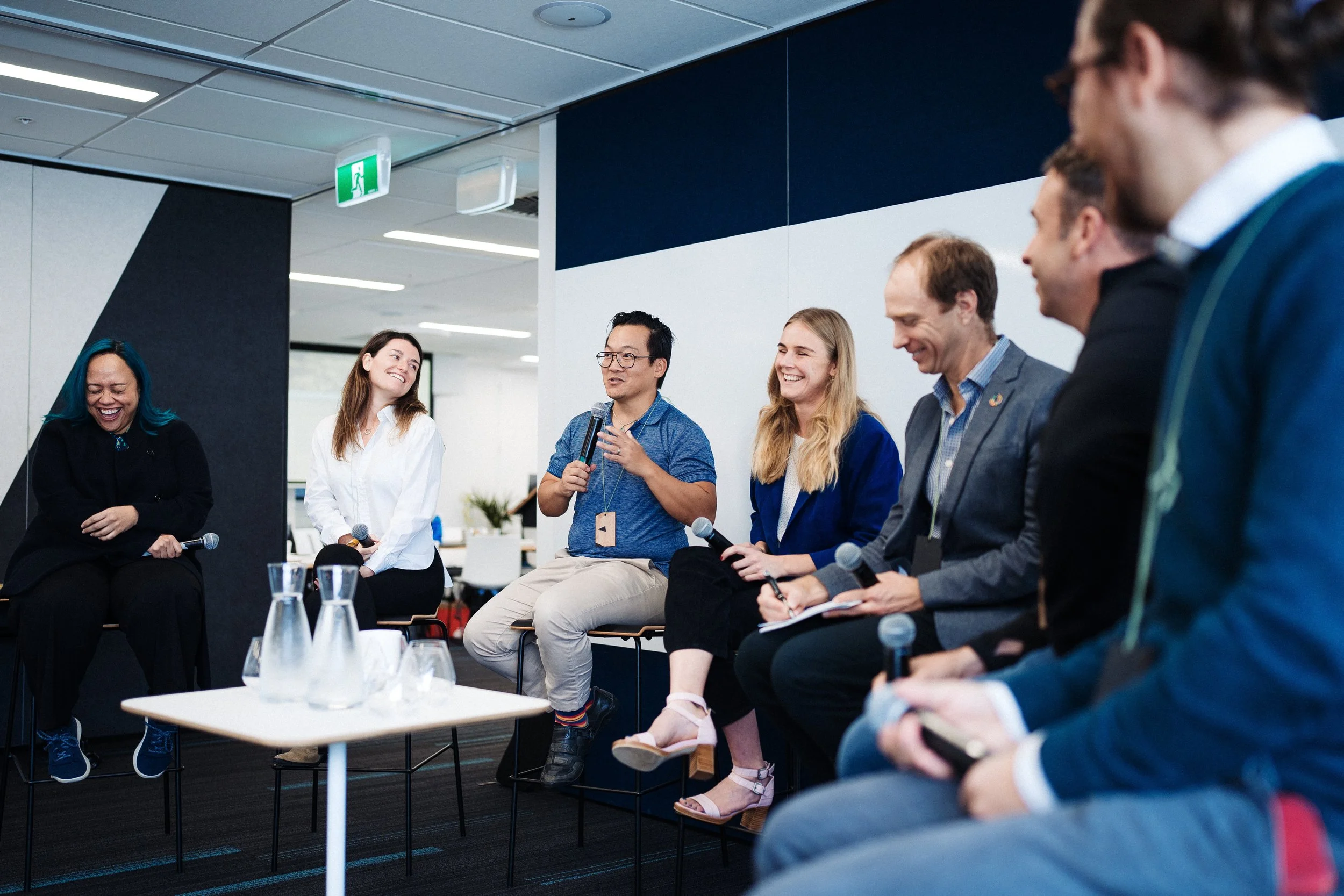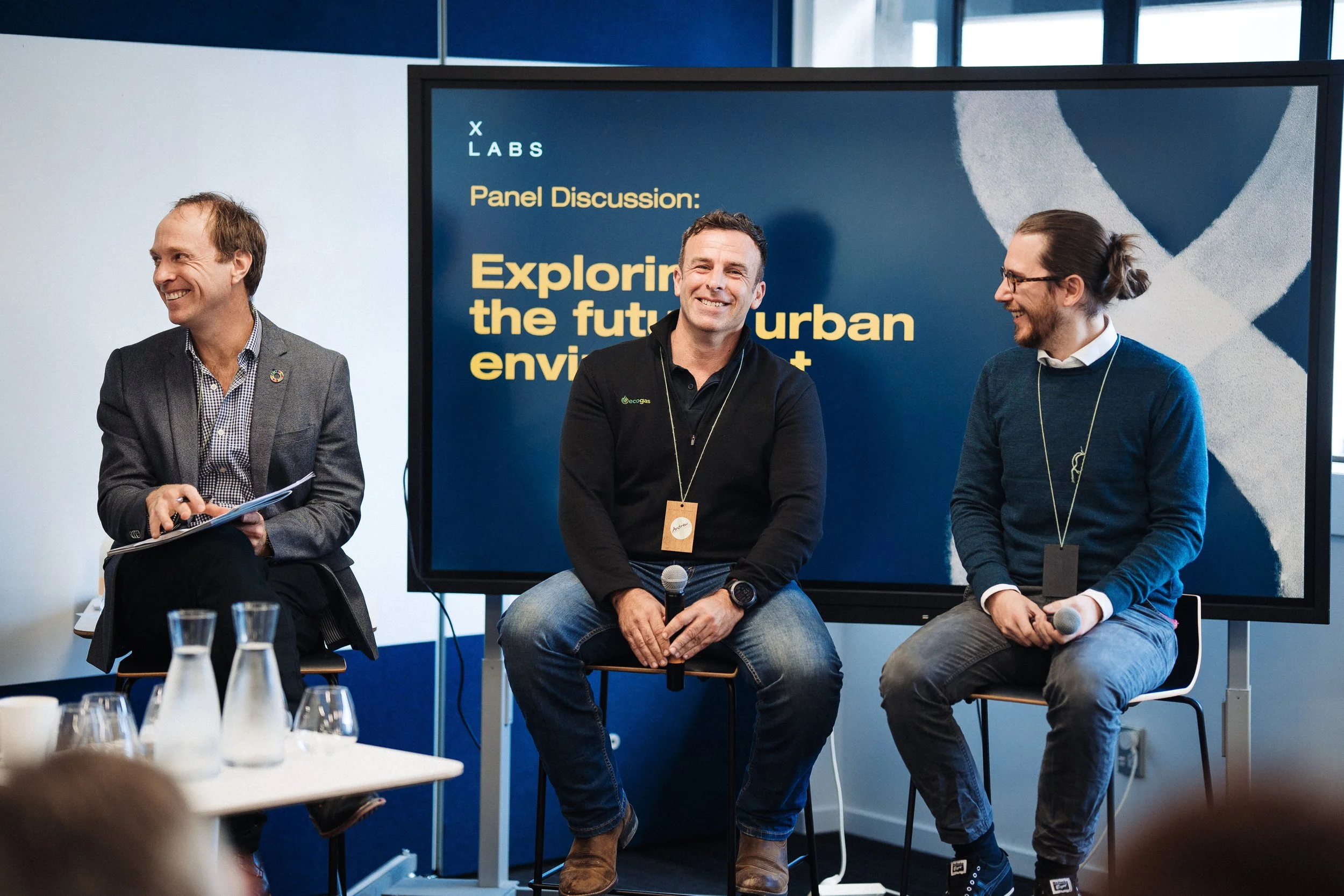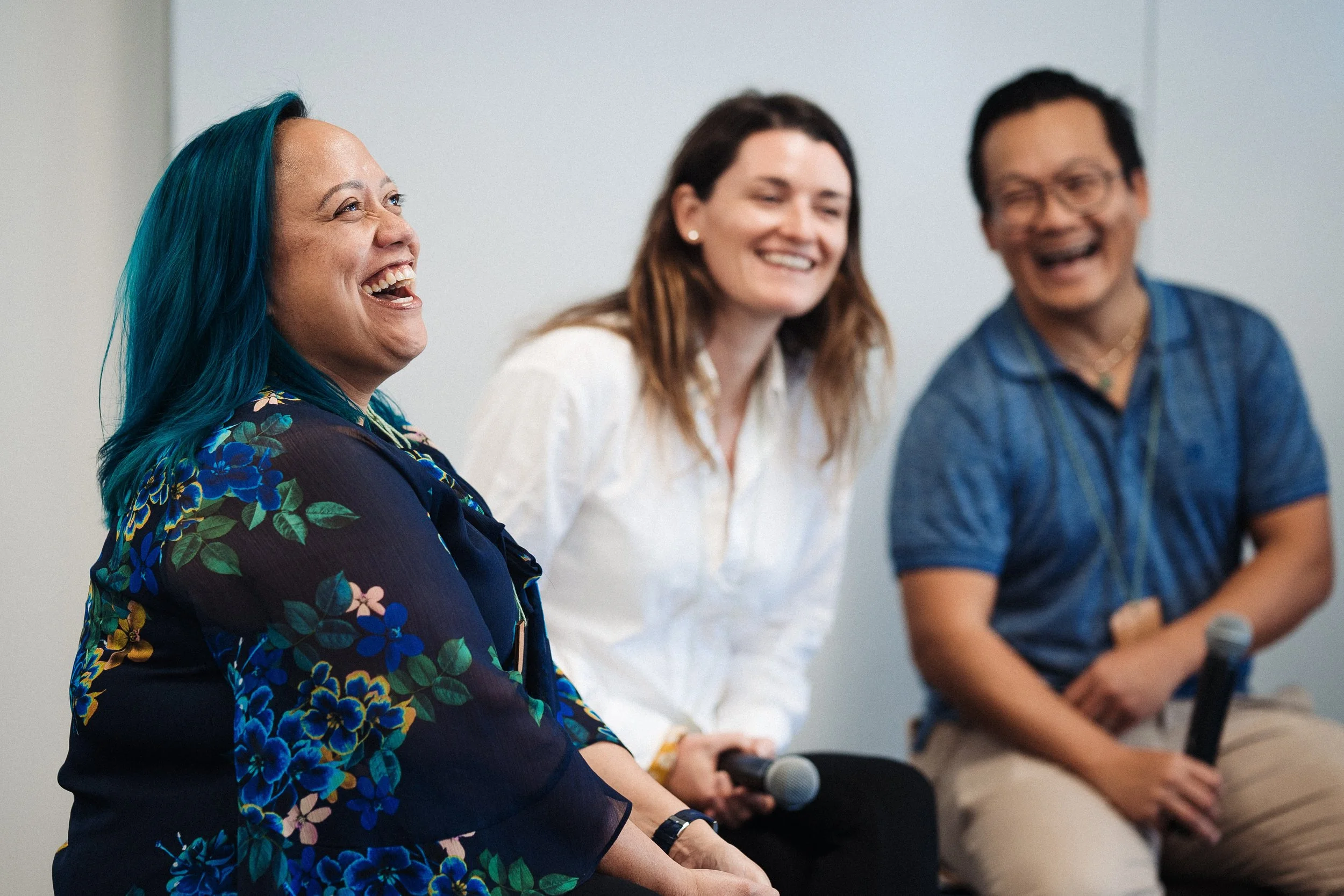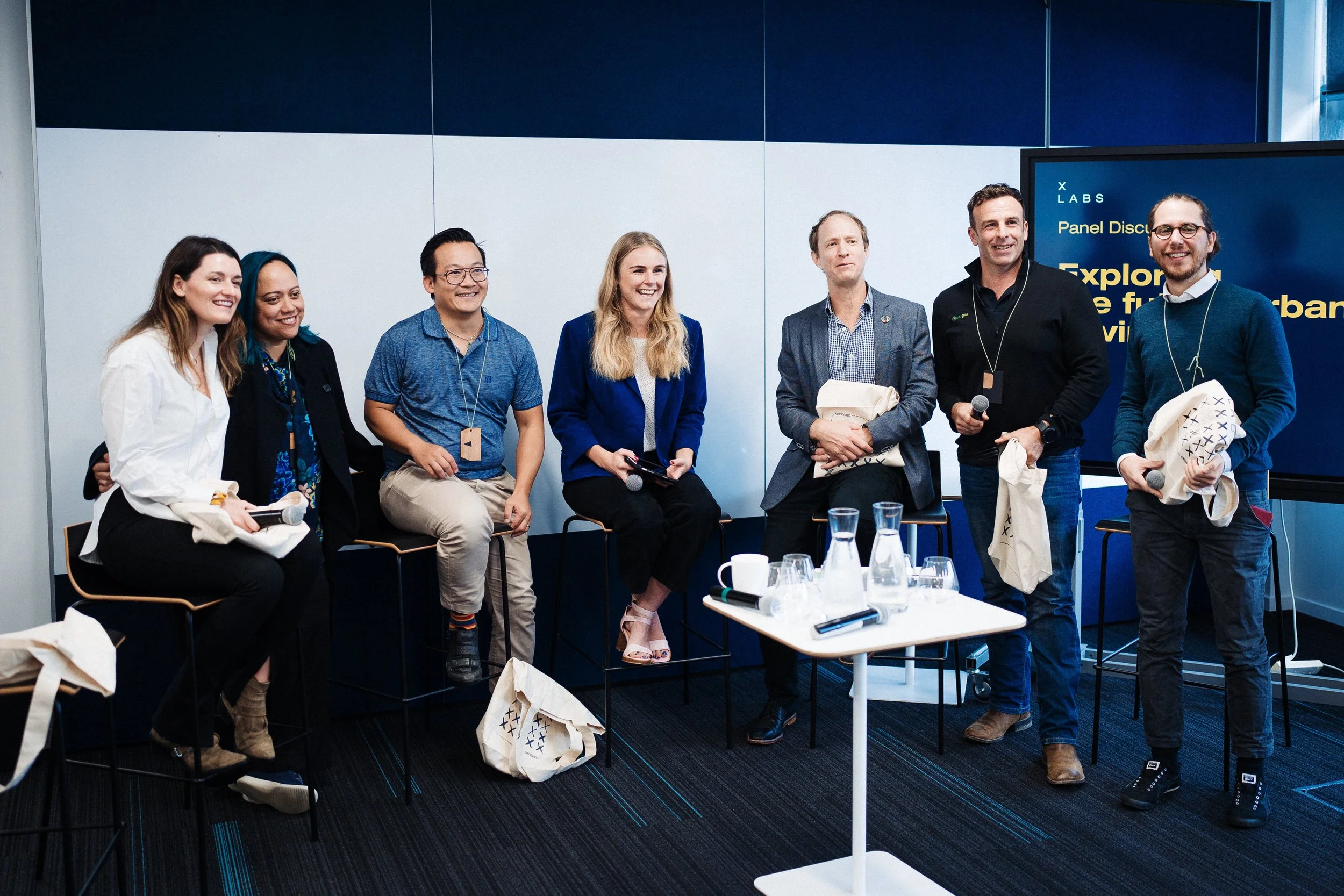How can we activate circular economy within our urban environment?
Our cities. They are our beloved bustling centres of business, leisure, culture, and art. They are where the large majority of us live, and they are hubs for innovation and creativity. And they are also responsible for generating a great deal of our waste and pollution.
Despite taking up just 2 per cent of global landmass, our urban centres consume more than 75 percent of natural resources, account for over 50 percent of solid waste, and emit up to 60 percent of greenhouse gases, contributing to pollution, climate change, and biodiversity loss.
Our urban centres and the space that they occupy are growing rapidly. Over the next 40 years, we are expected to add the equivalent of a city the size of Paris to the planet every week. According to global circular economy think tank Ellen MacArthur Foundation, 1 billion more homes are needed worldwide by 2025, and 25% of them will be in multi-storey complexes in cities.
As more of us choose to make our life in our cities, we have the opportunity to consider what sorts of places we want to live in, and what will be required for us to build them. How can we leverage the principles of a circular economy to build urban environments that support thriving people, communities, businesses, and natural environments?
That is the question we put to our second panel discussion at XLabs LIVE earlier this year in Tāmaki Makaurau. The panel was moderated by Circularity’s Environmental Strategist Samantha Walmsley-Bartlett, and featured guests from a diversity of sectors including business, manufacturing, innovation, green buildings, and the food technology sector.
The discussion ranged from converting food waste into bio-energy, to questioning our transport systems and exploring how we might develop cross-sector solutions to maximise the efficiency of resource use. Highlights of the conversation are presented below through the lenses of Circularity’s six Circular by Design methodologies. These methods are used by Circularity to help business, cities and organisations unlock future opportunities that enable people and planet to thrive.
1. Closed Loop Systems
In a circular urban environment, our cities mirror nature by keeping materials in flow and optimising their value.
In nature there is no waste. The waste of one becomes the food of another. Circular, regenerative cities can mimic this dynamic by ensuring that everything that we make can be unmade, and the elements distributed elsewhere in a closed loop system.
In Reporoa, XLabs panellist Andrew Fisher is building a world-class food waste-to-bioenergy plant which will turn food waste into energy and biodigestate through anaerobic digestion. Already he has built and runs Eco Stock - a business that processes over 100 tonnes of commercial food waste every day, turning it into animal feed. Utilising vegetable offcuts and food that don’t meet quality assurance criteria as the inputs, this model not only prevents wasted food from going to landfill and emitting methane, but also reduces our reliance on problematic stock feed alternatives such as palm kernel expeller.
Andrew Eagles, CEO of the Green Building Council, shared that embodied carbon emissions are responsible for 9% of New Zealand’s GHG emissions. Addressing this challenge by reclaiming, reusing, and upcycling these materials is equivalent to taking one million cars off the road. Our choice of materials and where they come from can make a big difference in the overall carbon footprint of a building.
While business, communities, and individuals have a big role to play, the radical redesign of our urban systems for optimal resource use also requires urgent government leadership. Right to repair legislation needs to be prioritised, and the building code adjusted to facilitate and encourage the use of recycled materials while still meeting high quality safety standards.In a circular future, the deconstruction industry will sit alongside the construction sector, at a similar size and level of prominence. Everything we make will be able to be unmade.
“I think in future generations, our kids and their kids will look back and ask us “You threw away phones? You threw away cars?? What were you thinking?” — Andrew Eagles
Already legislative changes are coming that will encourage the reuse of materials — Eagles referenced that in 2024 or 2025, we’ll see changes to the building code that will mandate the measurement of embodied carbon in the consenting stage of all new buildings. The changes will also aim to reduce operational carbon by 30-40%, in the form of home standards around lighting, heating, and insulation. Although right now, as long as it is not structural many recovered and recycled materials can be used.
2. Smart Materials
Designing and producing our goods, packaging, and houses with smart materials means working with inputs, feedstocks, and substrates that cause no harm to human health or the environments they operate in.
When Profile Group discovered that they used enough single-use plastic packaging to cover 25% of the Earth’s circumference annually, they began investigating alternatives. You might not have heard of Profile Group, but it’s highly likely you’ve encountered one of their products - as New Zealand’s leading integrated supply chain for aluminium windows and doors, they have supplied their products to over 50% of New Zealand’s architecture, through their well-known brands of APL, Vantage, Altherm, and First Window & Doors.
Mikayla Plaw, Profile’s Executive Director and GM of Organisational Development and Sustainability, and her team worked closely with Circularity, staff, Profile’s network of fabricators, and local stakeholders, to develop a novel alternative using smart materials — a completely regenerative, reusable, renewable, and eventually compostable packaging service called Wool Looped. This is currently being trialled across the Profile Group network and is all made within an hour of their Waikato base using wool from the underbellies of local sheep. The alarming thing is not so much that one group of companies were producing so much plastic packaging waste, but that producing such a volume of waste is standard across the manufacturing industry. The collective impacts on our environment are staggering.
Smart biomaterials can be grown for purpose rather than being extracted, and can be further developed using leading edge science and technology. In some cases they can sequester carbon, be used indefinitely, or at their end-of-life return to the Earth as inputs to regenerate living systems.
Andrea Stocchero, Sustainable Architect and Portfolio Leader for "Trees for High Value Wood Products" at Scion, pointed to timber and wool, both of which New Zealand is already intimately familiar. But he also talked about bio materials, utilising inputs such as mycelium and hemp, and the shift in mindset that is required to fully use resources. He suggested we have a moral duty of make the most out of bio-resources without waste, whether they are plant-based, animal-based, water or renewable energy. The challenge, as he sees it, is radically redesigning our consumption and production systems to grow materials at “the speed of need”, in order to allow to regenerate living systems while accelerating the pace of change across all elements of the circular economy.
“If I say value, what is the first thing you think about? Dollars. But if we add an ‘s’ to value, we move from ‘value’ to ‘values’. This is what will enable the change and transition to a circular economy.” — Andrea Stocchero
3. Regenerative Behaviours
Thriving circular cities will require mechanisms that influence, reward, normalise, and socialise behaviours that regenerate natural resources and sustain living systems.
Many of us are familiar with the ideas of composting food waste to create new soil, and planting trees to sequester carbon. Yet many of the regenerative behaviours that we are familiar with happen on an individual level. It is when we embed them in our businesses, our governments, and wider communities that we can start to really shift the dial. For many businesses, leveraging regenerative behaviours at a large scale represents the aha moment when they align their guiding purpose to the values of their customers.
Plaw pointed out that one of the biggest barriers is that we still need to convince large swaths of the population that we have a big problem, and that the magnitude of necessary changes required to meaningfully address climate change are not well understood or politically palatable. She spoke of “convenience carbon” with reference to the way we get around. We live in a country where public transport isn’t reliable, and outside of main city centres there is little to no infrastructure. The modern lifestyle is ever-changing and busy. It’s easy to jump in your car to save time, this is a big part of our traffic problem. How many of us are willing to accept that both private and business vehicle use will need to drastically reduce to meet emissions targets?
Kāinga Ora’s Director of Sustainability Alec Tang added that as we intensify our cities, we need to get used to the idea of rethinking how we travel, or even ask ourselves if we need to get around as much as we do? He pointed to a huge housing intensification exercise by Kāinga Ora in the Auckland suburb of Mount Roskill, with the aim of building 9,000 new homes.
“If we look at Mount Roskill, Dominion Road is already very congested. We cannot have 9,000 new homes worth of people moving around in the same way that we have historically moved around.” — Alec Tang
Kāinga Ora has been working in Auckland on the concept of an “urban ngāhere”. Tang explained a lightbulb moment when in discussion with mana whenua, who asked him “Do you know what ngāhere means?”. Having previously understood that “ngāhere” is translated to “forest”, he learned that the deeper context of the word is around the concept of provisioning. Prior to Pākehā settlement, Māori gathered almost everything they needed from the ngāhere — food, fibre, water, all came from the forest. When considering what an urban ngāhere might look like, he spoke of the concept of a 15 minute neighbourhood, where our immediate needs are met within a 15 minute radius. Central also to this idea is the duty of regeneration - to the urban environments that sustain us, the green spaces in between, and the social fabric of the people that make up the place.
We need to also assess what we are willing to accept in order to create regenerative cities. Kylie Horomia, Head of Industry Transformation at agtech company WayBeyond, told the story of a customer she had worked with in Australia who had a leafy greens and microgreens business that had been operating for many years. Urban sprawl meant more people were moving into rural regions next to working producers meaning an increase in noise complaints about vents, trucks, forklifts. The grower faced huge pressure from neighbours to change his business operations or potentially shut down. That business employs a large percentage of locals so any change in business would have a huge impact on the economy in that region.
4. Circular Business Models
New circular business models are required to optimise resource value creation through sharing, integrated services, and recommerce.
Economic development which operates within natural resource limits needs to enable customers to do more with less. Examples might include the sharing of assets, resource recovery, product life extension, and product-as-a-service models where manufacturers of big ticket items such as washing machines, cars, and even kitchens take responsibility for the longevity and end-of-life reclamation of their products to recycle and turn into new products.
So many of our businesses operate in silos, only marginally aware of what is going on in their own industry or sector, let alone in other sectors. In order to explore circular business models, a lot can be gained by looking to collaborate with others. You wouldn’t have immediately thought that solving an issue with plastic waste would come about by talking to the sheep farmer down the road — but that’s exactly what Profile’s Wool Looped has done. The primary raw input is low grade wool from the sheep’s belly, wool that couldn’t fetch a good market price within the textile industry. In this case one business's waste stream became another’s valuable inputs.
Profile also looked to the other companies within their group. Plaw explained Wool Looped isn’t a product; it’s a packaging service. Crucial to embedding long-term circularity into the wool packaging, the business needed a way to efficiently reclaim and reuse the product. Profile has a logistics company, APL Direct, which delivers their products all over the country — and those trucks are often coming back to the distribution centre empty. By developing an end-to-end reverse logistics system, all packaging that protects Profile’s products will able to be reused or recycled into new packaging.
Plaw shared the group’s plans to one day design and build a material recovery centre, for every part of their supply chain to be able to be reclaimed. Working with the local community and business units, she explained that it’s about being responsible for the end-of-life of all their products, and being mindful about excess materials.
“If you end up with construction materials that you don’t need — that you’ve over-ordered — you can go back to your supplier and often they will take it back. People just don’t ask.” — Mikayla Plaw
5. Networked Participation
The concentration of population and businesses in our cities provides opportunities to scale the impact of collective action, by leveraging the power of networks.
It’s handy when you have a distribution company within your own network, but Fisher is looking at a similar system for the Ecogas plant with the help of external stakeholders. He explained that some of the reasons he chose to build the plant in Reporoa: It’s close to the crossroads for all logistics across the North Island; it’s already on the existing gas network; and co-located with T&G Global, who require heat for their glasshouse.
The central location makes collaboration with other stakeholders easier, and with Auckland Council onboard to supply food waste from their kerbside collection, Fisher shared an example of networked participation. There are currently over 50 trucks a day that travel from the Reporoa area to Auckland, filled with compost from a local commercial producer and aggregate from several large companies. After conversations with these partners, these trucks which currently come back empty, will soon be filled with Aucklanders’ food scraps to produce bio-gas.
The past two and a half years of living with COVID-19 has seen many of us appreciating the collective and realising our interconnectedness, as we came to understand just how much we rely on essential workers. We saw many iwi, hapū, and local neighbourhoods banding together to look after vulnerable people in their communities. They were participating in a networked way, and at a scale that had not been seen before. If we can do this to look after our communities, how might we scale things up even further to eradicate waste? How might we encourage more businesses to work together to feed upon each other’s waste and resource flows? How might grassroots start-ups scale their impact by working with big business?
Stocchero describes such a future as one of industrial symbiosis, where we connect with the community and realise mutual benefits across supply chains. He points out that even within existing value chains, often nobody has the full knowledge of every other element of the chain. It is only through sharing more and having conversations that we can find further opportunities for collaboration and efficiency gains. He also points to a growing need for a symbiosis between people and nature’s resources. Most of us don’t know how or where our food, wood, and other raw materials are grown or produced. An improved connection of our urban communities to the resources, the locations and the people who grew them, can help us to better appreciate the full impact of our business and consumer choices.
6. Embedded Intelligence
Emerging disruptive technologies will provide us with the intelligence we need to authenticate data flows between stakeholders and enable continuous improvement.
Smart businesses are leveraging exponential technologies to provide data and insights, that in turn drives business decisions. Technology itself is agnostic, so it is up to us to make clever use of the tools that are already available to aid us in making the transition to circular cities. Disruptive tech such as Blockchain, Internet of Things, Artificial Intelligence (AI), Machine Learning, and Virtual Reality and Augmented Reality can help provide the necessary infrastructure required to authenticate performance, protect resources, and improve customer satisfaction.
Several of the panellists pointed to the importance of looking at the data to weigh up options around resource use and waste streams, as the seemingly obvious choice might not always be the best one. Eagles raised the question of whether in the future it’s going to be more sustainable to produce wool carpets using renewable yet virgin resources, or synthetic carpets made from rescued plastic from old fishing nets? Only full waste audits and smart and integrated data systems will provide the answers to questions such as these.
WayBeyond utilises hardware, software, and AI, to enable produce growers to do more with less. By gathering and predicting yield, performance, and environmental metrics, they’re helping produce growers minimise their use of natural resources like water. Horomia’s big question for the future is around how we are going to feed a growing population in a much more regenerative way?
Technology can certainly provide a helping hand, but she points out that disparities in data literacy mean there is often a disconnect between the capacity of the technology and the ways in which people are or are not using it. She used the example of working with one business who had some great technology, but the data was living on clipboards and in notebooks. Or people may gather the data but aren’t sure what actions are required to make improvements. She noted that we need to create better connections between data, the technology available to us and the people required to use it.
In order to capitalise on the opportunities that the circular economy offers to eliminate waste and pollution, reduce our emissions, and regenerate living systems within our urban environments, we need to start thinking in very different ways. The mindshift begins with examining how it is that we interact with the spaces we live in and the people within them, how and who we participate with towards regenerative goals, and how we might redesign our business operations to nurture symbiotic relationships between the people and businesses within our cities and their hinterlands.
— Written by Alina Siegfried







